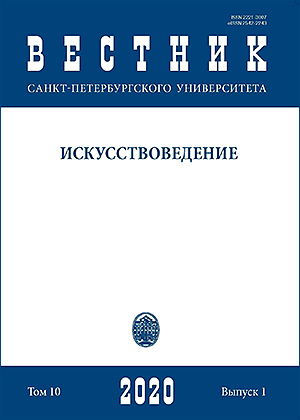The Interpretation of Emblem Concordia by Andrea Alciato in Peter Paul Rubens and Diego Velázquez paintings
DOI:
https://doi.org/10.21638/spbu15.2020.108Abstract
The article postulates that two famous paintings of the 17th century “The Surrender of Breda” by Diego Velazquez and “Meeting of the two Ferdinands” by Peter Paul Rubens were influenced by the emblem “Concordia” from Andrea Alciato’s book. This point of view has already been discussed repeatedly in relation to Velázquez’s painting, but for the first time it is expressed with reference to Rubens’s work. The hypothesis is justified by the analysis of the historical and cultural situation, mainly, by the materials related to the ceremonial entry of Cardinal-Infante Ferdinand to Antwerp in April 1635. The painting “Meeting of the two Ferdinands” has also been considered in the context of the “solemn encounter” type of works, among which it occupies a particular place due to its emphasized centerpiece — handshake, symbolic motif, derived from the Roman antiquity. The new interpretation turns the emblem “Concordia” into a connecting link between the two works by Rubens and Velázquez. It further justifies the point of view of those researchers who wrote about the formal proximity of the two paintings. Both artworks were created at the same time (1634–1635), and their relationship does not seem to be a coincidence, although it remains unclear how two artists could learn about each other’s ideas. The article offers an answer to the long-posed question: why the significant handshake motif, taken from the “Concordia” emblem, is absent in Velázquez’s painting. The analysis of the work by the Spanish painter brings to light the complex allegorical composition, hidden behind the realistic manner of that historical canvas. The revealed distinction in regard to the mentioned emblem indicates the clandestine polemical position of the younger artist, who might have deliberately taken a similar theme after his older colleague, but made a completely different interpretation.
Keywords:
Andrea Alciato, Diego Velázquez, Peter Paul Rubens, Thirty Years War, emblem, antique tradition, historical picture, Breda, Nördlingen
Downloads
References
References
Downloads
Published
How to Cite
Issue
Section
License
Articles of "Vestnik of Saint Petersburg University. Arts" are open access distributed under the terms of the License Agreement with Saint Petersburg State University, which permits to the authors unrestricted distribution and self-archiving free of charge.






